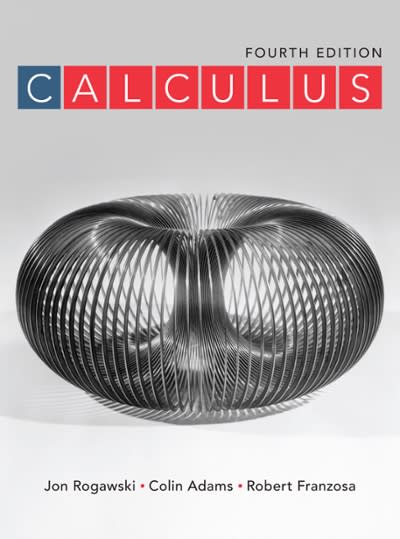Let (mathcal{S}) be the boundary surface of a region (mathcal{W}) in (mathbf{R}^{3}), and let (D_{mathbf{n}} varphi) denote
Question:
Let \(\mathcal{S}\) be the boundary surface of a region \(\mathcal{W}\) in \(\mathbf{R}^{3}\), and let \(D_{\mathbf{n}} \varphi\) denote the directional derivative of \(\varphi\), where \(\mathbf{n}\) is the outward unit normal vector. Let \(\Delta\) be the Laplace operator defined earlier.
(a) Use the Divergence Theorem to prove that
\[
\iint_{\mathcal{S}} D_{\mathbf{n}} \varphi d S=\iiint_{\mathcal{W}} \Delta \varphi d V
\]
(b) Show that if \(\varphi\) is a harmonic function (defined in Exercise 37), then
\[
\iint_{\mathcal{S}} D_{\mathbf{n}} \varphi d S=0
\].
Data From Exercise 37
A function \(\varphi\) satisfying \(\Delta \varphi=0\) is called harmonic.
(a) Show that \(\Delta \varphi=\operatorname{div}(abla \varphi)\) for any function \(\varphi\).
(b) Show that \(\varphi\) is harmonic if and only if \(\operatorname{div}(abla \varphi)=0\).
(c) Show that if \(\mathbf{F}\) is the gradient of a harmonic function, then \(\operatorname{curl}(F)=0\) and \(\operatorname{div}(F)=0\).
(d) Show that \(\mathbf{F}(x, y, z)=\left\langle x z,-y z, \frac{1}{2}\left(x^{2}-y^{2}ight)ightangle\) is the gradient of a harmonic function. What is the flux of \(\mathbf{F}\) through a closed surface?
Step by Step Answer:






